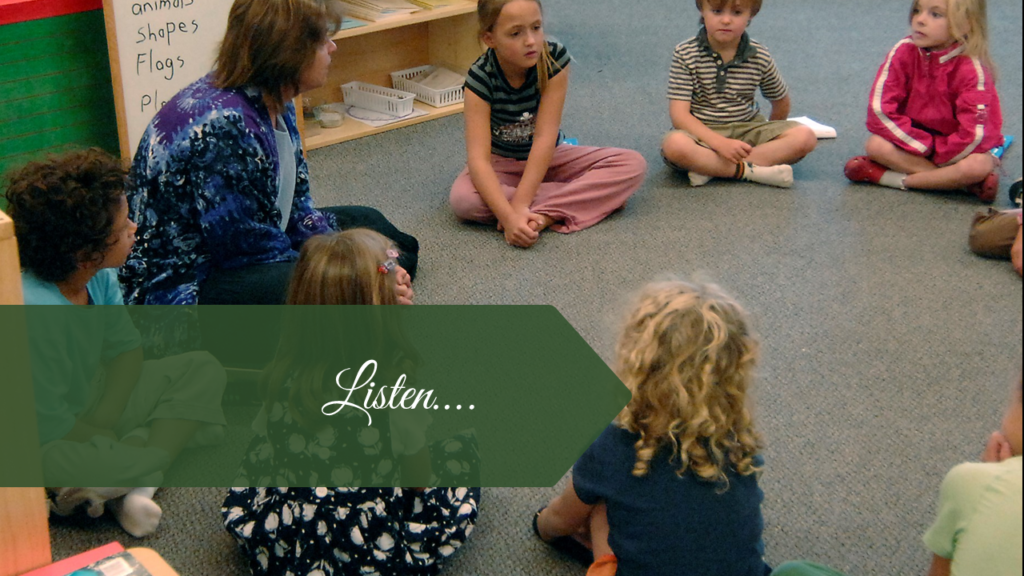The problem we face are students whose behavior is not settling in to what we Montessori guides call normalized. It’s eight weeks into school and these children are still unfocused, talkative, and disengaged with the learning opportunities you’ve presented. In part 1 of this I suggested that I’d focus on building relationship with those students…any way you can.
How do we do that?
First, practice pausing. Dr. Montessori encouraged us to observe and stay in the background. She said that as a guide we should work at doing less; taking less action.
The environment itself will teach the child, if every error he makes is manifest to him, without the intervention of a parent or teacher, who should remain a quiet observer of all that happens.
Maria Montessori, The Child in the Family, p. 28
What about the behaviors we see while we are pausing and refraining from intervention?
While it can be difficult to be objective, learning to make note only of those actions we actually see can be very helpful. I liked using timed check sheets for this purpose. What’s a timed check sheet? It’s a check sheet with columns where you make tally marks at regular short intervals of 2 to 4 minutes. For example, watch for 2 minutes, refrain for 2 minutes, watch again for 2 minutes, refrain again for 2 minutes…continuing for as long a period as you wish. Here’s a sample check sheet you can easily set up on your own, or click here for a downloadable full-page copy with instructions.

Typically, when I observed using this sort of timed sheet, I saw a number of things that I had not expected and, most notably, I tended to witness more of the behaviors that I thought didn’t exist. I was made aware that my attention gravitated to the times the student was performing the undesirable tasks. This exercise opened my eyes.
Once you have some behavior data to analyze, the next step is to get clear on how those behaviors make YOU feel. I would go through every single behavior and choose the first feeling that came to mind and record it next to the stated behavior.
This step is important because our emotional response to student behavior can cloud our judgments and our own behavior in response to our students. Don’t be afraid to be brutally honest with yourself. You don’t need to feel ashamed of your feelings, nor do you need to justify them.
What you do need to do is be honest with yourself. You’ll get a chance to figure this part out eventually, but for now the most important thing you need to get clear on is that those feelings (the ones that are in response to the student’s behaviors) belong to you. They are yours to own, to figure out, and, for the most part, leave at the door to the classroom so that you can separate your feelings from your students.
Finally, once you’ve done all this, you will want to examine all the possible reasons for the behavior. Don’t just go with your first thought. Instead, write that thought/explanation down and then ask yourself, “What else could it be?” Write that down, too. Ask again: “What else could it be?”
Continue this deepening explanation until you have 6 possibilities. From these, choose one to test. You might decide to set up a little “experiment” to see how your student responds. Then you start the observation process again.
Last question: What should I be doing with the behavior while I’m doing all this observing?
This is relationship building time. Spend time talking with the student. Sit near them during work periods or times when the child tends to be distracted or distracting. Have them join you in the observation to make them aware of behaviors that students exhibit in a classroom. Discuss the behaviors and whether they are desirable or not. Discuss why or why not. Talk about learning and what behaviors support it.
Your goal in all this conversation is to understand what this student thinks about the learning process and whether they see themselves fitting into a learning process at all. Helping students learn how to learn and how to be engaged in their learning is really what our role is all about. Then you can leave the rest up to the environment!




